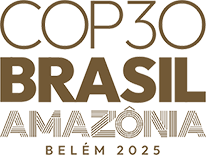What is the COP?
The United Nations Framework Convention on Climate Change (UNFCCC)
The United Nations Framework Convention on Climate Change (UNFCCC) was launched for signature at the United Nations Conference on Environment and Development (Rio-92). It launched the multilateral climate change regime.
Following the principle of “common but differentiated responsibilities,” the regime recognizes the obligation of developed countries to lead efforts to reduce greenhouse gas emissions and to provide financial, technological, and capacity-building resources for mitigation and adaptation actions in developing countries.
The regime is built on five pillars: mitigation, adaptation, finance, technology, and capacity building. In addition, other issues have gained prominence in the debates, such as loss and damage, just transition, gender, Indigenous peoples, youth, agriculture, and oceans.
What is the COP?
The UNFCCC launched the Conference of the Parties (COP) as the body responsible for decision-making on the implementation of the commitments adopted by countries to tackle climate change. The COP is attended by all countries that have signed and ratified the Convention. Currently, 198 countries participate in the UNFCCC, making it one of the largest multilateral bodies in the United Nations (UN) system.
COP is assisted by a Subsidiary Body for Implementation (SBI) and a Subsidiary Body for Scientific and Technological Advice (SBSTA). The COP also serves as the Conference of the Parties to the Kyoto Protocol (CMP) and the Paris Agreement (CMA).
The COPs are the annual Leaders' Summits on climate change, usually held in November or December. Besides the COP, the CMP, CMA, SBI, and SBSTA also gather there.
Kyoto Protocol and Paris Agreement
Kyoto Protocol
Adopted in 1997 as part of the UNFCCC, the Kyoto Protocol outlines individual quantitative emission reduction targets for developed countries. The Protocol required these countries to reduce their emissions by 5% in 2008-2012 compared to 1990 levels.
One of the key elements of the Protocol was the implementation of market mechanisms to achieve these commitments. cost-effective. These include the Clean Development Mechanism (CDM), allowing the development of cost-effective projects to reduce greenhouse gas (GHG) emissions, ensuring mitigation benefits, and creating sustainable economic benefits.
Paris Agreement
The Paris Agreement, adopted in December 2015 at the 21st Conference of the Parties (COP21), highlighted the key role of the Framework Convention (UNFCCC) that it is connected to.
The Agreement stresses the principles of the UNFCCC and introduces three goals:
(iii) to keep the global temperature increase well below 2 °C, with efforts to limit it to 1.5 °C;
(iii) to strengthen adaptation and resilience capacities; and
(iii) to align financial flows with the other goals of the Agreement.
The Paris Agreement also innovated by requiring all countries, both developed and developing, to regularly submit "Nationally Determined Contributions" (NDCs). In the NDCs, each country explains what actions it intends to take to respond to climate change. The implementation of these actions will be accompanied by an enhanced transparency regime.
As NDCs are defined by each country, they respect the national reality and sovereignty of each nation.
Intergovernmental Panel on Climate Change
The Intergovernmental Panel on Climate Change (IPCC) was created in 1988 by the United Nations Environment Programme (UNEP) and the World Meteorological Organization (WMO) to provide policymakers with regular scientific assessments of climate change, its impacts and possible future risks, and to suggest options for adaptation and mitigation. IPCC currently has 195 member countries, including Brasil.
The IPCC, in its assessments, sets out the state of knowledge on climate change, identifies issues that are agreed by the scientific community, and areas where more research is needed. The reports resulting from the IPCC's assessments are key inputs in international negotiations to tackle climate change.
Working Groups and Task Forces
The IPCC's assessments and special reports are developed by three Working Groups, each looking at a different aspect of climate change science:
Working Group I (Physical Science Basis),
Working Group II (Impacts, Adaptation and Vulnerability) and
Working Group III (Mitigation of Climate Change).
The IPCC also has its Task Force on National Greenhouse Gas Inventories, the main objective being the development and refinement of methodologies for the calculation and reporting of national greenhouse gas emissions and removals.
The Working Groups and the Task Force are engaged in the preparation of reports, as well as in the selection and management of the experts who work on them as authors.
All of these activities are assisted by technical support units that guide the production of IPCC assessment reports and other products.
IPCC Glossary
IPCC offers a glossary of technical terms used in its reports and in climate negotiations. Consulting the glossary can help you understand the topics discussed and make it easier to follow the debates.
English version: Trad. Bárbara Menezes
Proofreading by Enrique Villamil
